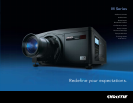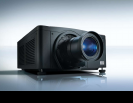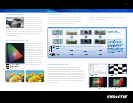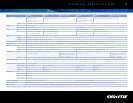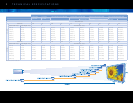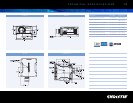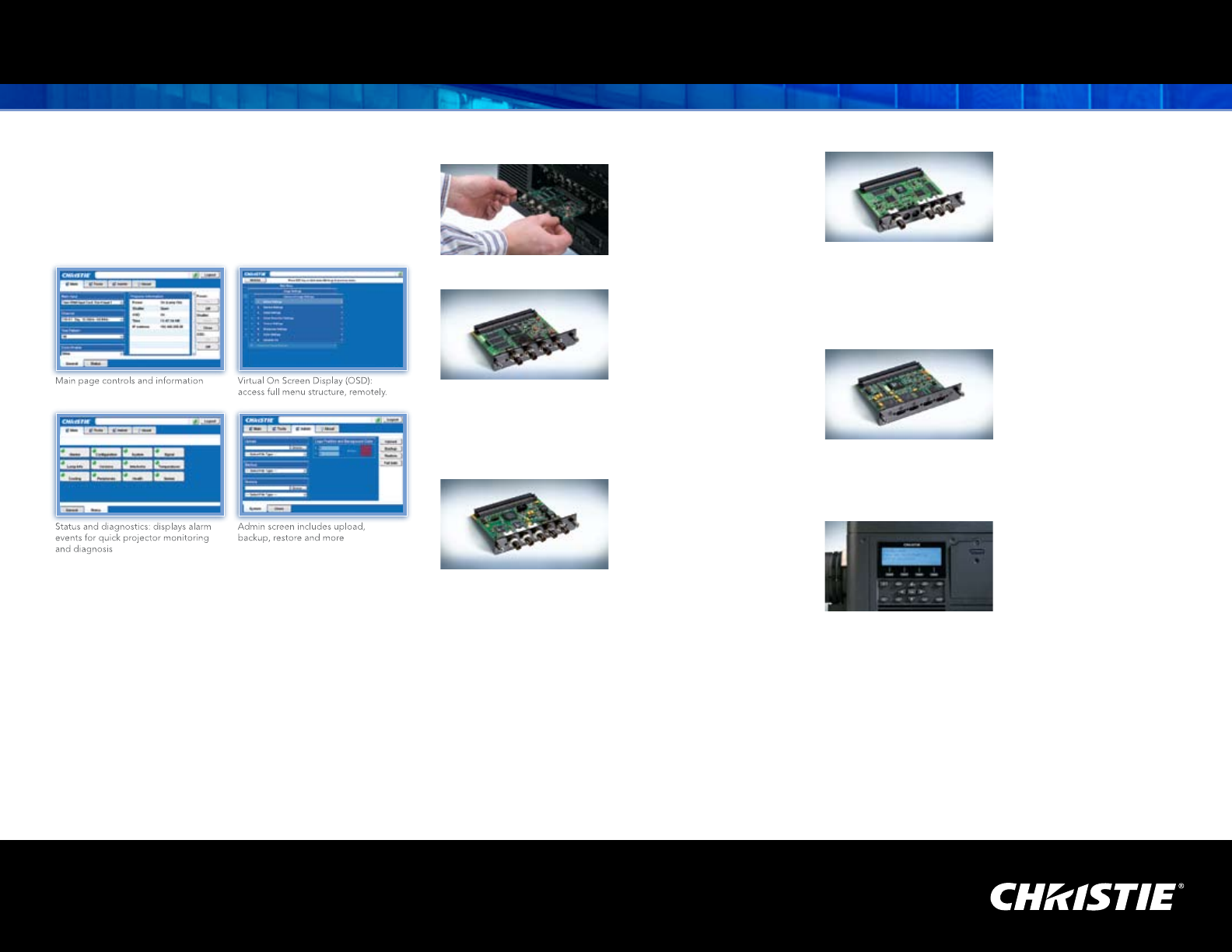
[
8
]
ChristieNET
TM
web interface
ChristieNET
TM
enables users to access all projector menus
and controls through a web interface without disrupting the
live presentation. This allows for real-time adjustments and
monitoring of each projector on the network – regardless
of geographic location.
[
8
]
Automatic shut-off
This feature lowers the cost of ownership by reducing power
consumption and extending lamp life when the projector is not
in use. In this mode, if a signal is not detected, the projector
will slowly dim the lamps then shut off one lamp, and finally
if there is still no signal, the system will go into standby mode.
If a signal is detected during the ramp-down phase the unit
will revert back to its full power, dual lamp mode.
[ 8 ] Input cards
In total, there are four input
card slots available. Each
projector is equipped with
a standard set of input cards.
Dual SD/HD – SDI input card
The Dual SD/HD-SDI input
card accepts both standard-
definition (SD) and high-
definition (HD) serial-digital-
interface (SDI) signals, and
enables the user to connect
two of either types of signal. Both single-link HD and dual-link
HD signals are accepted. This card also has two SD/HD-SDI
outputs to enable “loop-through” for its respective input.
Analog input card
The Analog input card
accepts an analog video
signal input over a 5 BNC
connector interface. It can
accept RGBH&V signals
over 5 connectors, as well
as component YPbPr signals on the RGB inputs.
Dual link DVI input card
The Dual link DVI input card has a 15-pin VGA connector
for analog signals and a DVI-I connector which can support
a single- or dual-link DVI HDCP video signal. The card can
simultaneously support a digital signal on the DVI input and
an analog signal on the VGA port.
DMX512 interface card
This interface card supports the DMX512 communication
standard through two 5-pin XLR connectors.
Video decoder input card
The Video decoder input
card accepts various types of
standard definition (SD) video,
including CVBS (composite
video), S-video, and component.
It accepts NTSC 3.58, NTSC 4.4,
PAL, PAL-N, PAL-M or SECAM formats. This card has two mini-DIN
connectors (for S-video signals) and four BNC connectors that
can be grouped to allow combinations of CVBS, S-Video, YPrPb
or RGB video sources.
Twin HDMI
TM
input card
The Twin HDMI input card
accepts two HDMI inputs
and provides 12-bit deep
color handling on the input.
Additionally, advanced
loop-through allows any
input on any input card to be looped through to the two HDMI
outputs on the card.
LCD keypad
This easy-to-use
LCD keypad includes:
•
Contextual menus provide
a fully-featured, intuitive
interface; removing the
need for a cluttered keypad
•
Large, four line LCD display
•
Adjustable brightness and timed LCD off mode
•
Intuitive keypad design that lights up when features
are active – making it user friendly
•
Active keys are color-coded amber to indicate that selections
will result in changes visible to the audience.
Dual-frequency receiver
The dual-frequency (38 kHz and 455 kHz) receiver ensure the
projector receives signals at increased distances between the
remote and projector, and reduces the affect of interference
from lighting.
6



